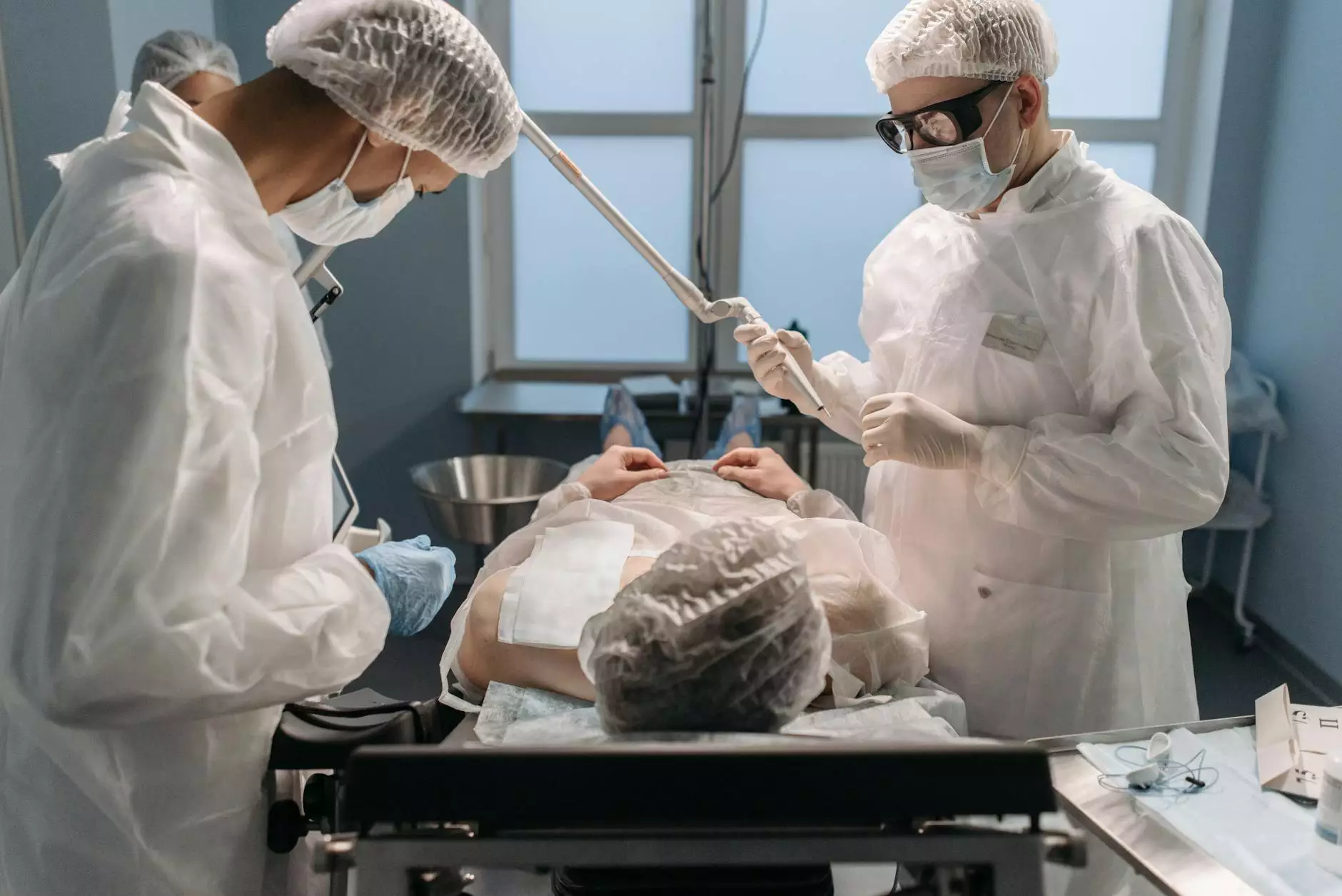Laparoscopic Bilateral Salpingo Oophorectomy: A Comprehensive Guide

In the realm of women's health, laparoscopic bilateral salpingo oophorectomy (LBSO) stands out as a vital surgical procedure. This minimally invasive technique involves the careful removal of both the fallopian tubes and ovaries, offering significant benefits for women's health. In this article, we explore the procedure's implications, benefits, risks, recovery process, and much more.
Understanding Laparoscopic Bilateral Salpingo Oophorectomy
At its core, laparoscopic bilateral salpingo oophorectomy is not just a surgical operation but a transformative experience for many women. The procedure is often performed to address various medical concerns such as:
- Ovarian cysts: Fluid-filled sacs that can develop on the ovaries.
- Endometriosis: A condition where tissue similar to the uterus lining grows outside the uterus.
- Ovarian or tubal cancer: Cancer that develops in the ovaries or fallopian tubes.
- Genetic predisposition: Women with BRCA gene mutations may opt for LBSO to prevent cancer.
The Surgical Procedure: A Minimalist Approach
Laparoscopic surgery, also known as keyhole surgery, utilizes small incisions and specialized instruments, making it less invasive than traditional surgical methods. Here’s how the procedure typically unfolds:
- Anesthesia: The patient is administered general anesthesia to ensure comfort throughout the procedure.
- Incision Creation: The surgeon makes a few small incisions in the abdomen, usually around the navel.
- Insertion of Laparoscope: A laparoscope—a thin tube equipped with a camera—is inserted through one of the incisions, allowing the surgeon to visualize the organs.
- Tool Utilization: Specialized instruments are inserted through the other incisions to carefully detach and remove the ovaries and fallopian tubes.
- Closure: After the organs are removed, the incisions are closed with sutures or surgical tape.
Benefits of Laparoscopic Bilateral Salpingo Oophorectomy
There are numerous advantages to choosing laparoscopic bilateral salpingo oophorectomy over traditional surgical options:
- Minimized Scarring: The small incisions result in minimal scarring, which is a key aesthetic benefit for many women.
- Shorter Recovery Time: Patients typically experience a quicker recovery, often returning to normal activities within a few weeks.
- Reduced Pain: Minimal tissue damage means less postoperative pain compared to open surgeries.
- Lower Risk of Complications: With less invasive techniques, the risk of complications such as infections is significantly reduced.
Risks and Considerations
While the benefits are substantial, it is essential to consider the potential risks associated with laparoscopic surgery:
- Bleeding: Postoperative bleeding can occur, although it's relatively rare.
- Infection: As with any surgical procedure, there is a risk of infection at the incision sites.
- Damage to surrounding organs: There is a slight risk of unintended injury to nearby organs like the bladder or bowel.
- General anesthesia risks: Patients must discuss any concerns about anesthesia with their medical team.
Preparing for the Procedure
Preparation is crucial for a successful laparoscopic bilateral salpingo oophorectomy. Your healthcare provider will guide you through the essential steps:
- Medical Evaluation: A thorough evaluation, including blood tests and imaging studies, will be conducted.
- Medication Review: Inform your doctor about all medications and supplements you’re taking.
- Fasting: Patients are generally advised to refrain from eating or drinking for a certain period before surgery.
The Recovery Journey
The recovery period following a laparoscopic bilateral salpingo oophorectomy is typically swift, yet it’s important to follow postoperative care instructions closely:
Postoperative Care
- Rest: Ensure ample rest and limit physical activity for at least a few days post-surgery.
- Pain Management: Follow your doctor's recommendations regarding pain relief medications.
- Incision Care: Keep the incision sites clean and dry; watch for signs of infection.
Monitoring Recovery
Patients should monitor their recovery and contact their healthcare provider if they experience:
- Excessive pain that is not relieved by medication.
- Signs of infection, such as redness, swelling, or discharge.
- Fever over 101°F (38.3°C).
- Nausea or vomiting that persists.
Emotional and Psychological Considerations
Beyond the physical aspects, it’s essential to acknowledge the emotional and psychological impacts of a laparoscopic bilateral salpingo oophorectomy. Many women experience a blend of feelings that can include:
- Relief: For women undergoing surgery due to medical concerns, relief from symptoms or the prevention of cancer is common.
- Grief: The loss of reproductive organs may bring about feelings of grief and loss.
- Empowerment: Taking control of one's health can lead to a sense of empowerment and strength.
It is beneficial to discuss feelings with a counselor or support group for women who have undergone similar experiences.
Long-term Health Considerations
Following a laparoscopic bilateral salpingo oophorectomy, women should maintain regular health check-ups. Managing hormones may be necessary if the procedure leads to menopause, and healthcare providers can guide patients in this regard.
Hormonal Management
For women who undergo an LBSO, hormonal changes may arise, particularly if both ovaries are removed. Discussing options such as hormone replacement therapy (HRT) can be a vital part of post-surgical care. Considerations include:
- Identifying Symptoms: Women should be aware of symptoms of menopause, which can include hot flashes, mood swings, and sleep disturbances.
- Counseling on HRT: Healthcare providers can offer information on the benefits and drawbacks of HRT.
- Regular Monitoring: Ongoing evaluations are necessary to address any health issues related to hormonal changes.
Conclusion
Laparoscopic bilateral salpingo oophorectomy is a significant surgical intervention that can have profound implications for women’s health. By understanding the procedure, its benefits, risks, and the recovery journey, women can make informed decisions regarding their reproductive health. As medical technology advances, procedures like LBSO continue to offer hope and relief to many women facing serious health challenges.
For further information and to schedule a consultation, visit our team at drseckin.com, where our dedicated healthcare professionals are ready to assist you on your journey to better health.


